On 8-March, we moved on from Trelew and the Northern Patagonia region further south to El Calafate. Unfortunately, all flights lead through Buenos Aires with very few connections directly between the smaller cities. We spent the day flying from Trelew north to BA and then back further south to El Calafate. The small town of El Calafate, which kind of reminded us of a small ski town similar to Steamboat Springs, Colorado. El Calafate is the main access point to the Parque Nacional Los Glaciares and the imposing, impressive, immense Glacier Perito Moreno. There are many different ways and tours that let you access the glacier. The most common are by bus and boat. There are some tours that also take you trekking on the glacier. We opted for the bus/boat tour and were not disappointed.
Quick note about the glacier. The guides claim that Perito Moreno is one of the only glaciers in the world that isn’t receding. It lies in between two mountain ranges. Because one is higher than the other, the snow backs up against the higher range and falls into the bowl between the two. The glacier is formed by the snow compacting. It continues to build year after year because of the location and weather conditions.
The bus ride to the park from El Calafate was about 45 minutes to an hour. We spent what seemed like an eternity at the park entrance station where everyone had to get off the bus and pay the entry fee (about $25 US per person). This was quite an undertaking considering there were at least a dozen buses that held anywhere from 16 to 30+ people all on the same tour schedule. We were actually stunned by the shear number of tourists, but equally as stunned to discover that the vast majority of them were Argentinians. We ran into very few English speaking tourists. We later learned that the Argentinian government is subsidising travel for all the citizens and returning 50% of travel costs as an economic stimulus measure. It has caused some issues with us finding hotels, flights, and rental cars, but we’re working through it. It is a great deal for the locals and they are taking advantage of it!
After getting through the entry to the park, our first stop was a viewpoint where we got to get out of the bus and take a few photos. It was our first glimpse of the glacier for which I am going quickly run out of superlatives to describe. This shot captures one of the boat tours that we would later join to give you a bit of idea of scale.
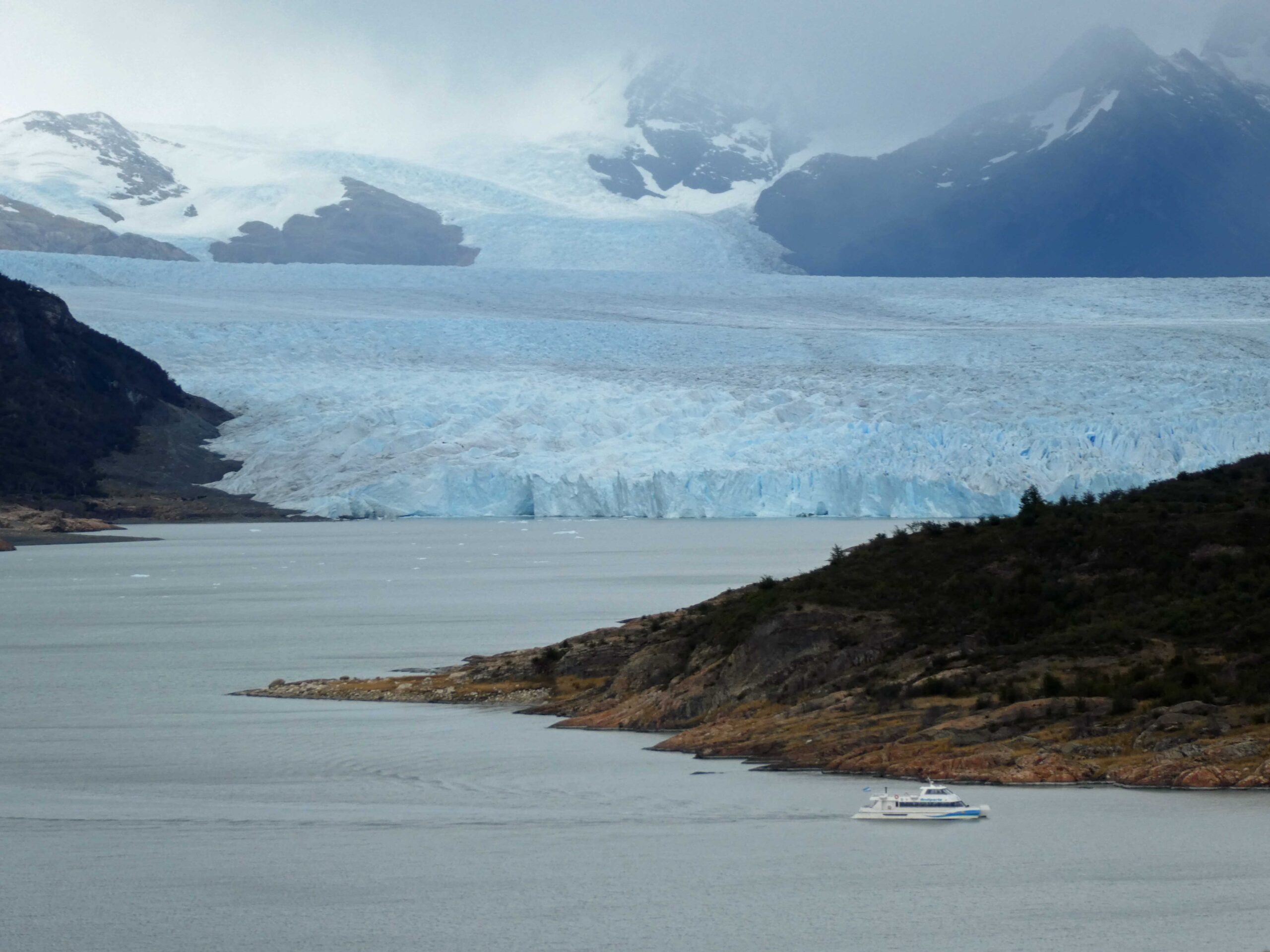
From the viewpoint, we continued in the bus until we arrived at the dock where the boat above departed. We took the cruise around the point depicted and spent about an hour floating back and forth in front of the glacier hoping to see calving, which is when huge blocks of ice fall from the face and become icebergs.
The glacier wasn’t the only geological highlight on our drive and cruise. The entire area is a wonder of volcanic activity and uplift. Here’s a shot of the lava as if melted into wonderful swirls of color right next to the glacier as we approached it on the boat. There’s an iceberg thrown in for effect.
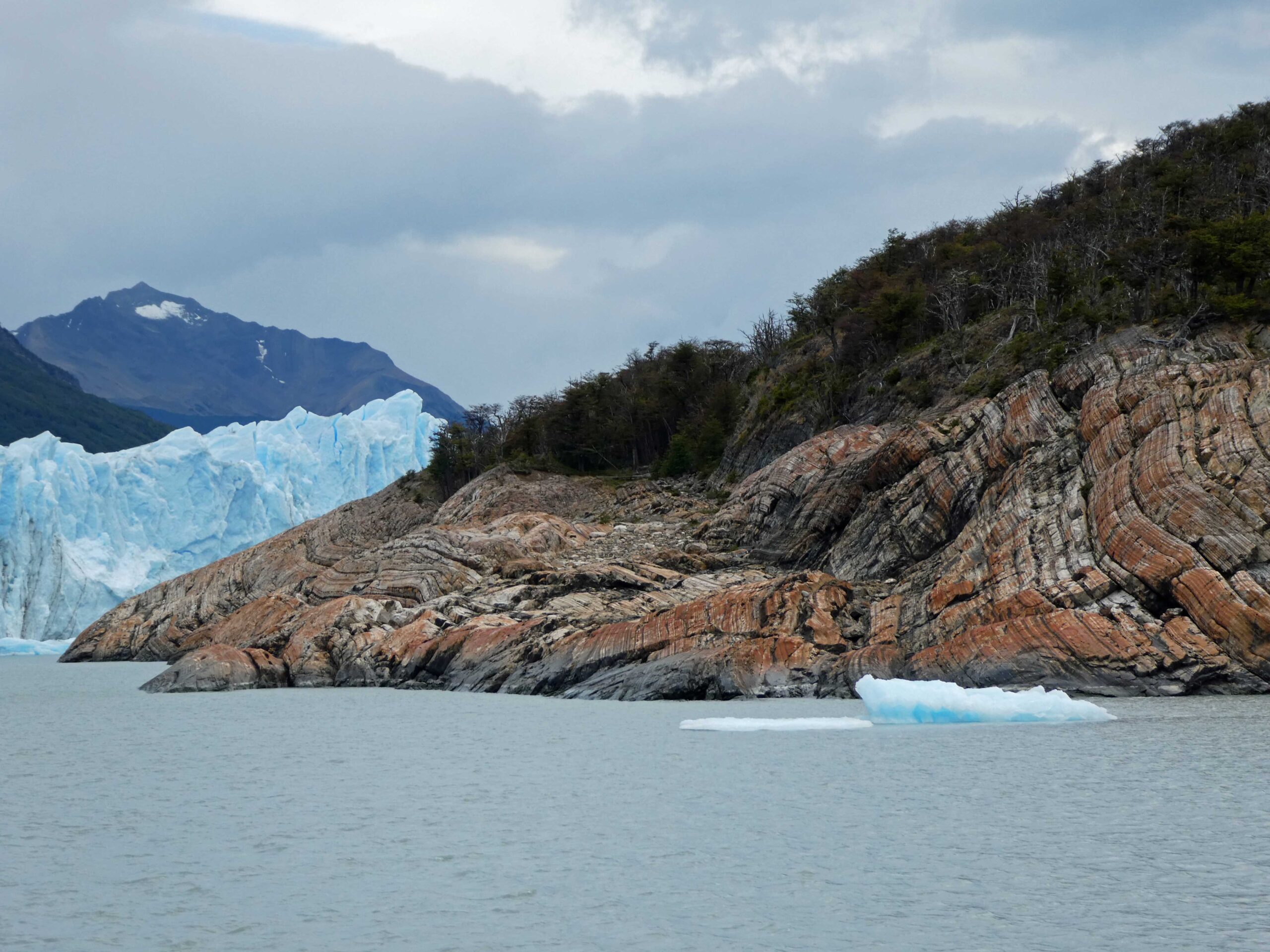
She doesn’t necessarily like them, but here’s a shot of Ande and the glacier as we approached the giant cliff of ice. You can see an ice cave forming. The regular cycle is they grow in size until they collapse.

Here’s a shot of a scientific research boat slightly smaller than our tour boat to provide some perspective an just how huge the wall of ice actually is. Boats get fairly close, but they do have to be careful how close they actually approach as the calving ice can be extremely hazardous. The ice wall dwarfs these huge tour boats. There is an understandably loud splash and wake when larger chunks fall off. We were basically cruising back and forth across the ice wall waiting for chunks to fall off.
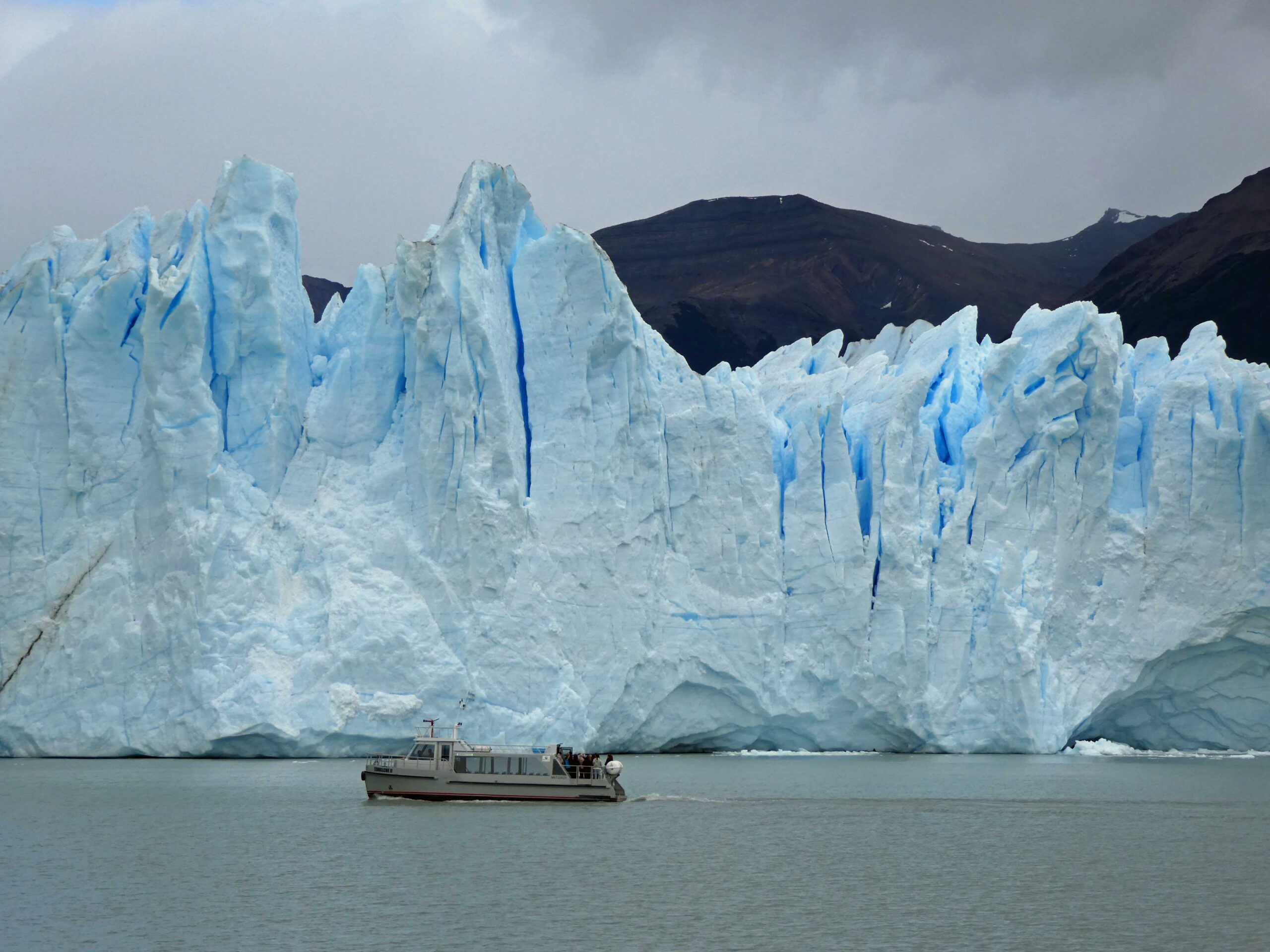
The sound is actually really surprising when it happens. It is very similar to thunder. You hear these large booms and then try to locate where it is coming from. Often, it is just happening in the middle of the ice field and ou don’t actually get to see ice calving off. The cracks seem to echo forever.
Something truly amazing you might see from the photographs is just how intense, varied, and deep the blue coloration is. You can spend all day trying to capture it. Here’s one of our favorite close up shots.
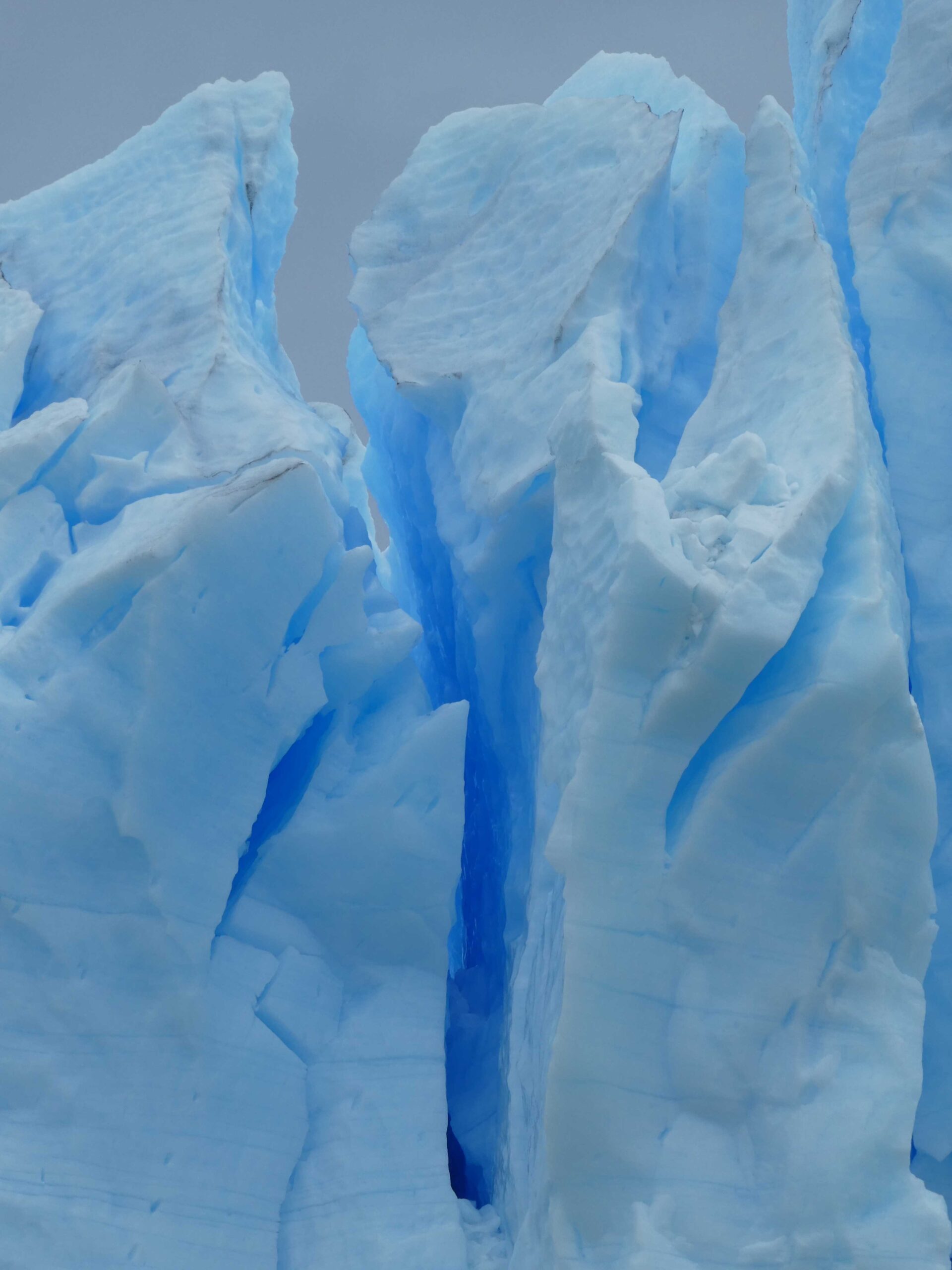
This totally looks doctored or fake in some way. Especially with the dull cloudy background at the top. I assure you, this is just as we saw it. It is really an amazing sight on a scale we’ve never experienced. The Rocky Mountain West has glaciers, but not this kind.
I mentioned earlier that one of the tour options is to take a trek on the glacier, and many, many people were taking the opportunity. As another example of scale, here’s a picture we took of the ants on the glacier from our tour boat.
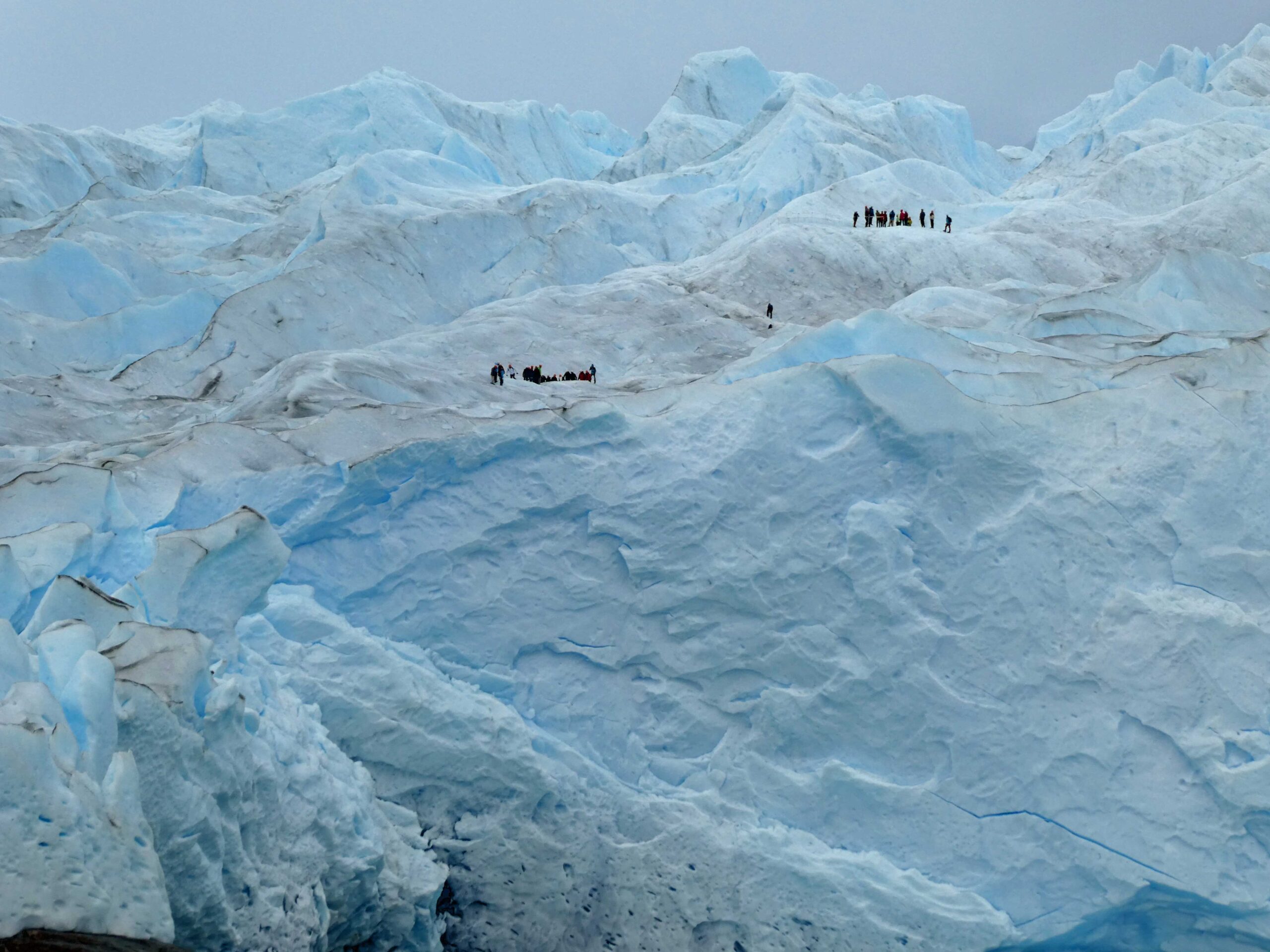
If you really need to enhance your feeling of immense insignificance on a grand global scale, I believe this is one great way to do it.
It was a tour boat full of tourists, so of course, there had to be some sort of cheesy interaction with the environment that provides a tailored photo opportunity. This tour included us watching one of the crew capture a smaller chunk of ice with a net and bring it aboard so we could all touch it — and experience what ice feels like?

So, you might think that the boat ride with its amazing views was the end of our tour, but actually it was only the beginning. This, after all, was only the south face of the glacier. What, there’s more you say? Why yes. After disembarking the boat, we returned to the bus and drove further into the park where we arrived at the visitor center/cafe that was the entry point for many kilometers of steel catwalks that give up close and personal views of the north face of the glacier. The next phase was 3 hours of free time to experience the glacier as you wish. We chose to bring a box lunch and bottle of wine provided by our hotel. We sat on the bench with a great view of the north face, popped open the bottle of wine, and watched ice melt for a couple of hours. Here’s our lunch view.
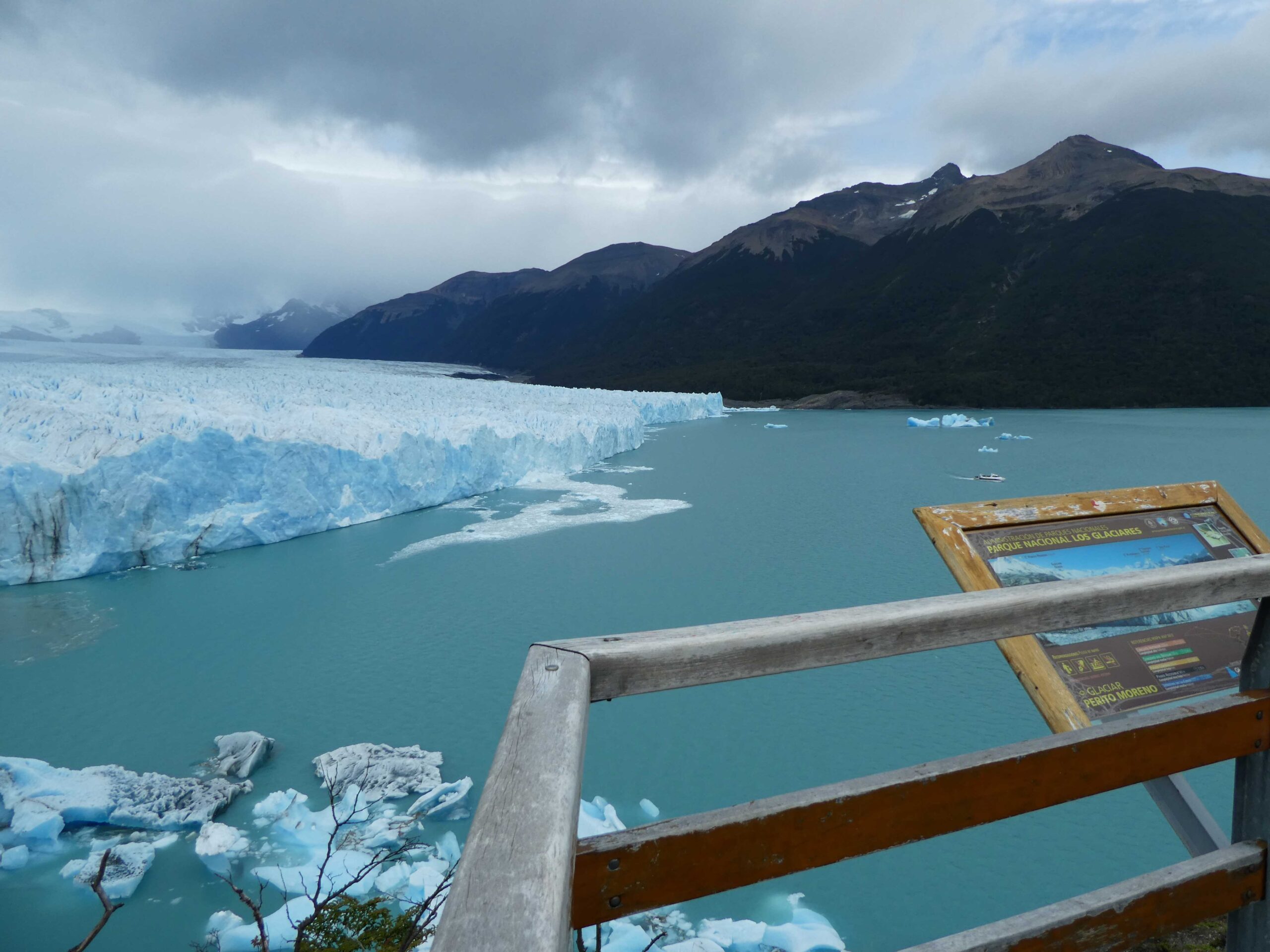
We made and effort to just sit, enjoy, and be in the moment, and not try to capture every second. While we ate lunch, we heard a huge thunderous crack but didn’t see anything fall. Seconds later, a huge iceberg emerged from underneath the water and sent waves pulsing through the floating ice. It was a poignant reminder that the huge ice wall we see above the water is only maybe a quarter if not less of the actual size of the glacier. Most of it is actually below the water.
To provide more examples of scale, here are a few more pictures of the catwalk. There were at least 4 kilometers of catwalk along the north face of the glacier.

One of the absolute best pictures of the day was captured by Ande on her phone from the top of the catwalk. It provides a perspective of just how deep the glacier is, but also highlights the texture at the top, which is missed in most photos of the face. Seeing it from this perspective really made us wonder how they found a stable and flat enough area to actually take people on to the top of the glacier.
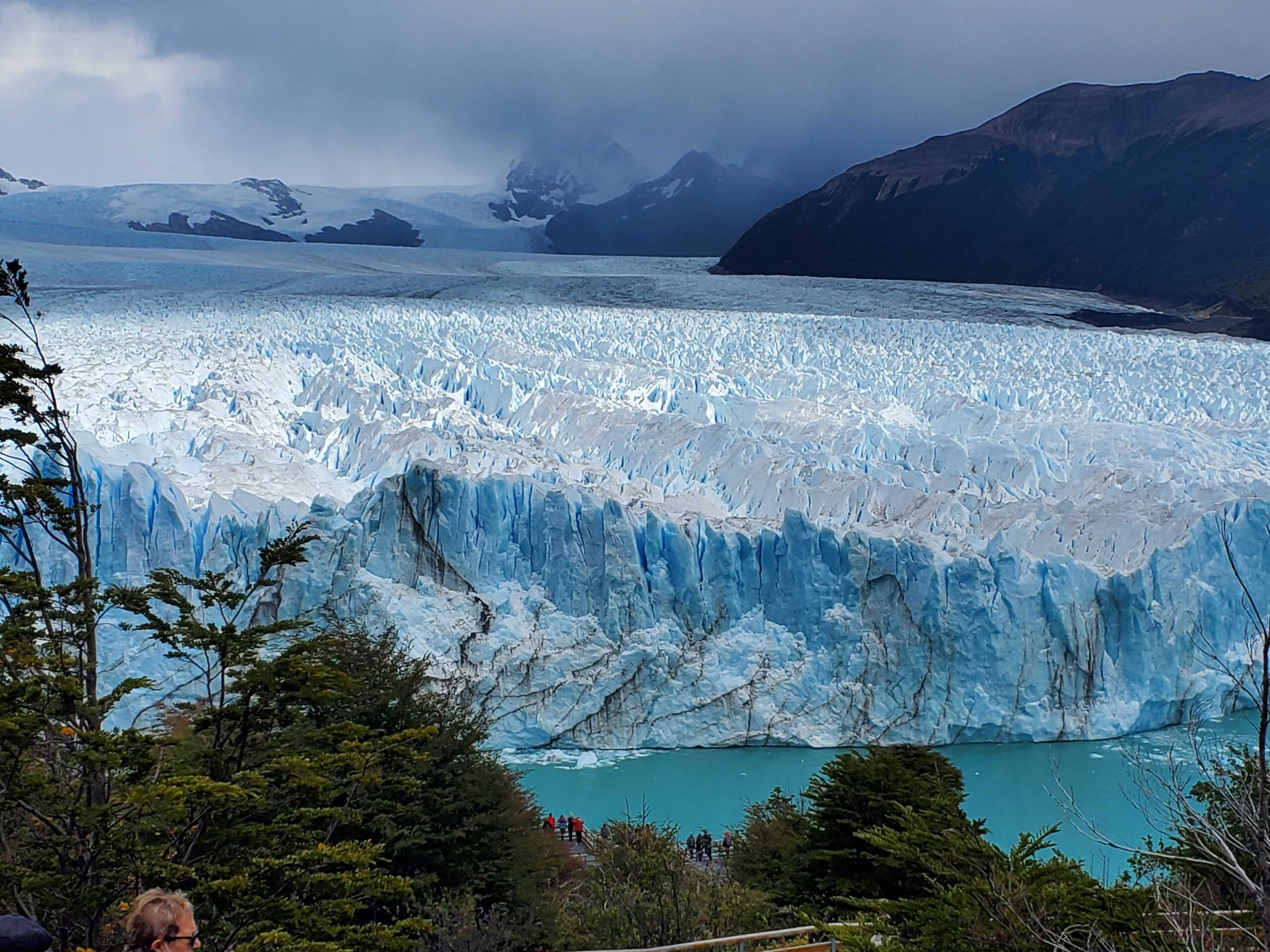
You’ll also notice that the entire area surrounding the glacier through which the catwalks wind is a very robust forrest. The surrounding greenery was almost as impressive as the massive sheet of ice we were there to see. The forest wasn’t the only other entity there trying to get the attention of the tourists away from the glacier. While walking on the catwalk, we were literally buzzed by an Andean Condor. I was lucky enough to accidentally capture a fairly decent close-up shot. There’s nothing for scale, but I’m guessing most have never seen a bird that is actually this large. It had to have at least an 8-foot wingspan if not bigger. As Ande put it, it was “shockingly large.” It is the largest flying bird in the WORLD with an average wingspan of 2.7 to 3.9 meters.
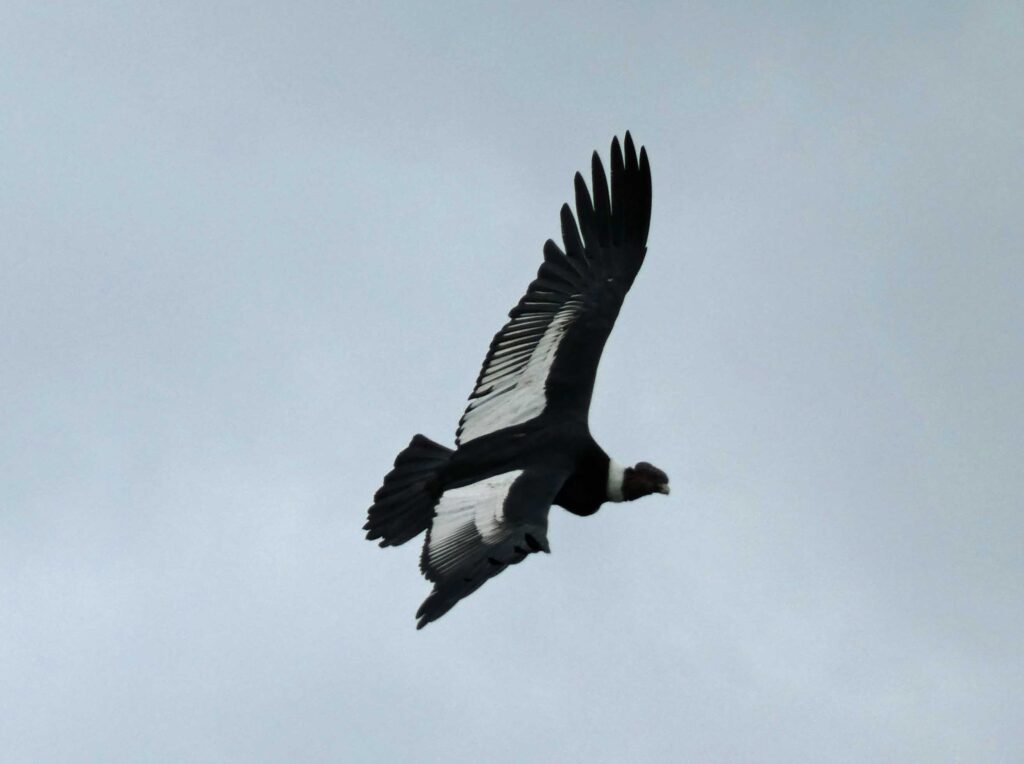
I’m not joking when I say that everyone in the area immediately turned away from the glacier and stared dumbfounded into the sky as he flew just feet over our heads above the catwalk. It was an amazing sighting on a day filled with amazing experiences.
While waiting for the bus, we struck up a conversation with another English speaker who turned out to be an Argentinian who actually lived in Paris and was traveling his home country as a tourist. Mattias responded “you need to ask a real Argentinian” to many of our questions, but provided us with a lot of insight into the country and lifestyle. We actually ended up running into him several times after our tour together. It was actually nice to run into a friendly face randomly during our time in El Calafate and El Chalten.
This one day with the glacier in the park was only part of our amazing week of glacier adventures. We returned to the park for another boat tour of the other glaciers to the north and then traveled further into the park itself to the small town of El Chalten, where viewing glaciers from your hostel room was run of the mill and the hiking trails to their feet were just outside your front door. Alas, that is material for another post.
We’re actually in Buenos Aires right now for a respite from travel, taking care of business and planning the next several weeks of travel that will include Bariloche, the lake and mountain district, and Ushuaia, the farthest southern tip of the country. We had planned to travel directly south after our glacier adventure, but the lack of direct flights and lodging made us postpone that adventure until April. We hope to catch up with a couple more posts while we’re in the city enjoying things like reliable internet.
We do hope you enjoyed the pictures of ice.
Jake
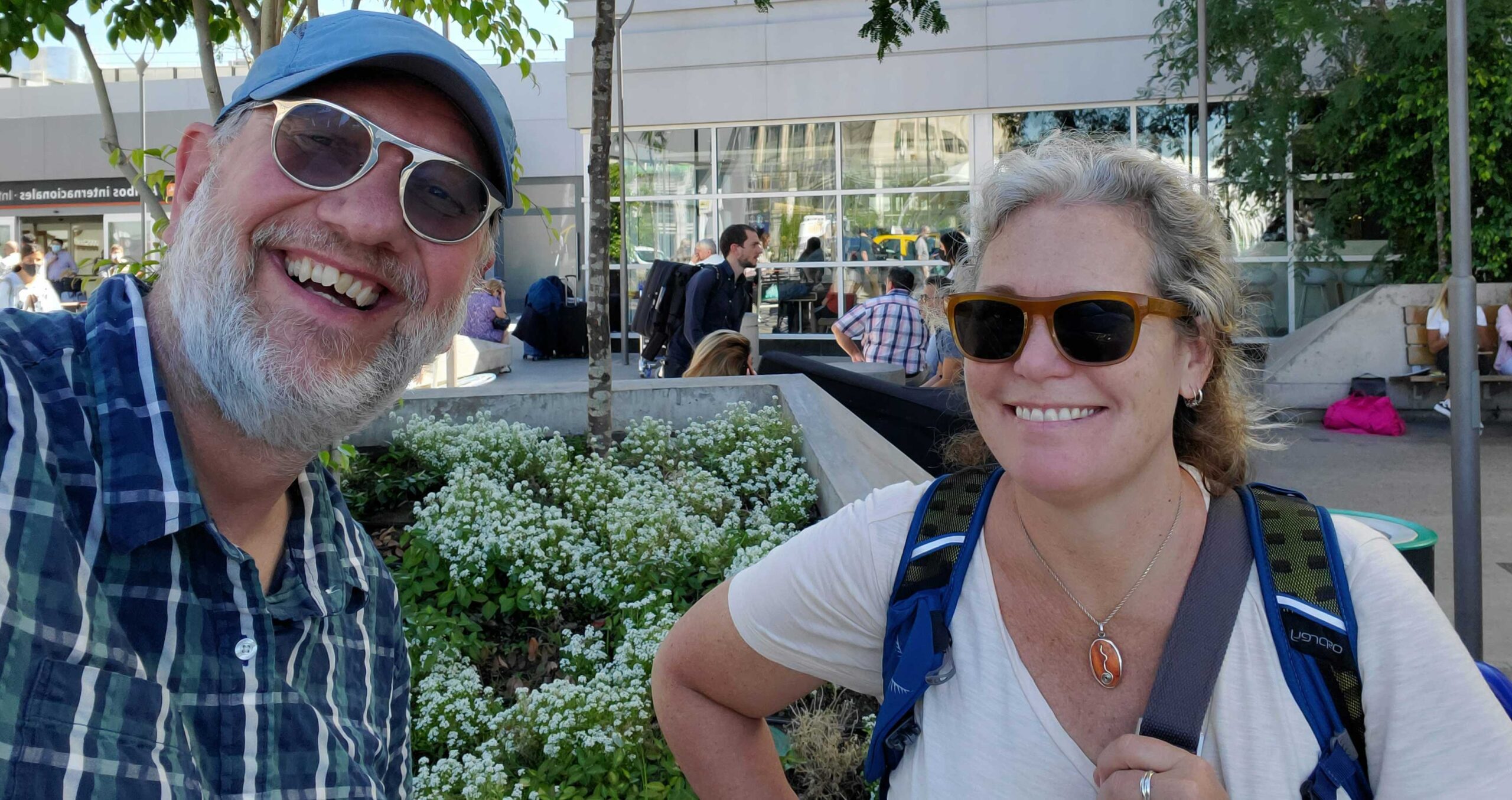
Gorgeous! I miss those smiles!
What a great day of glacier gazing! That blue is awesome looking can’t imagine it in person.
Great pictures, looking forward to seeing more
Wonderful place!!! Great pics!
What an experience ! Wonderful. I also liked. Seeing you smiles ! So happy for you love Mom C